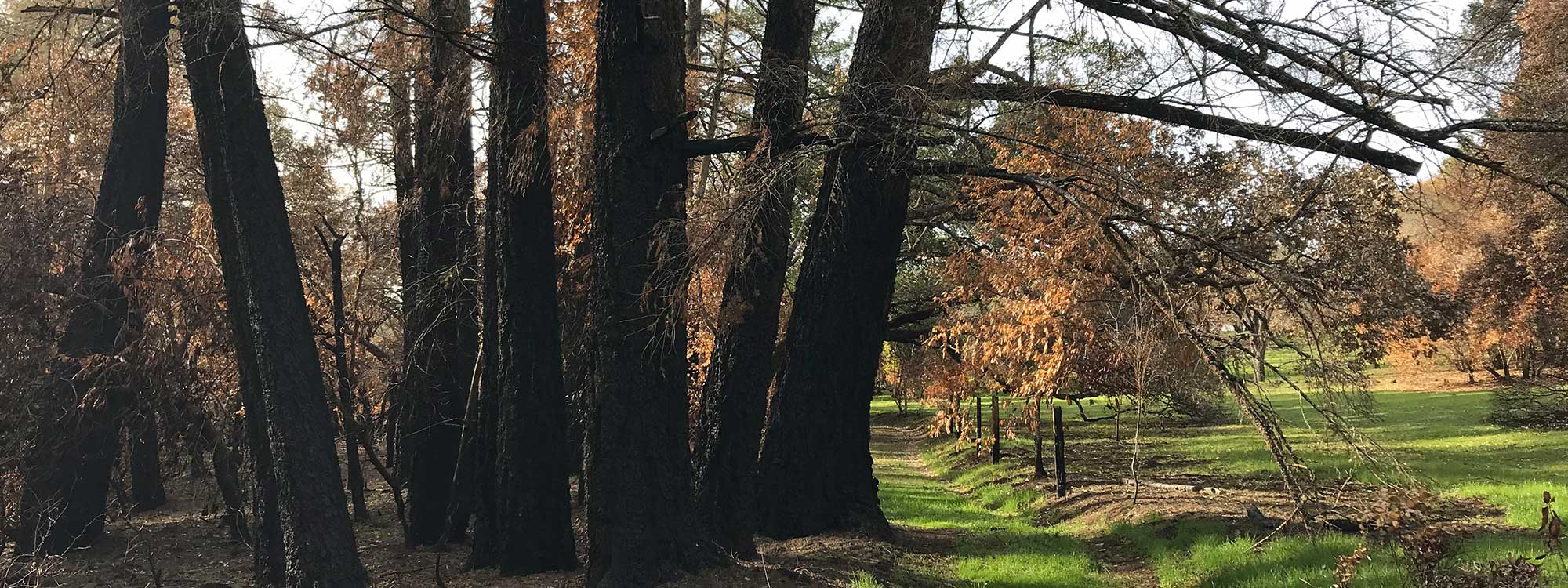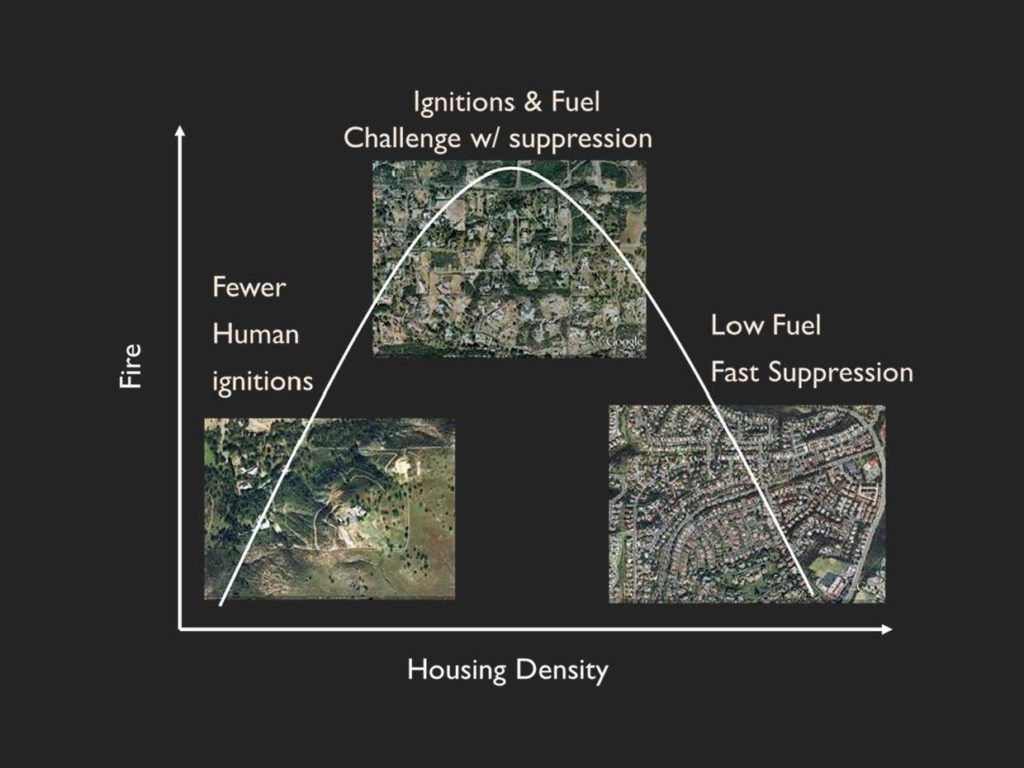In our efforts to thoughtfully plan for resiliency after the North Bay fires of 2017, a common question has been, “what is the single most dangerous factor that causes a high loss of life and homes from wildfires?”
Research shows that placing homes in wildland areas presents the most dangerous risk of a devastating fire. It’s not the shape and steepness of the land, not the types of trees and brush that grow there, not the gaps between a house and trees that fire has to cross, not even how likely a building’s materials are to catch fire. The highest risk factor is the arrangement of homes in medium-density subdivisions and rural communities in fire-prone landscapes.
As the hill-shaped curve of the graph below shows, there is low fire risk on one side where very few people live in wildland areas, as well as low fire risk on the other side where so many people live that the area isn’t really wildlands anymore. Rising in the middle is a dangerous peak, where lots of dispersed houses create fire ignition risk with wildland trees and vegetation to help fuel the flames.
Researcher Alexandra Syphard of the Conservation Biology Institute presented this finding on development and wildfire at the Living with Fire Symposium at Sonoma State University earlier this year. This science was based on several studies of wildfires across California and the United States. Click here to learn more.
This work is illustrated in this bell-curve graph, which shows that the highest wildfire risk is in medium densities, which are often seen in the wildland-urban interface—areas where homes are built near or among lands prone to wildland fire. The lowest wildfire risk is in the urban areas of high density and in very-low-density ranch or farm areas with one or two houses surrounded by large acreage.
Greenbelt Alliance is using this information and other research to help advance to fire-safe land-use policies throughout the Bay Area. Learn more about what we’re doing on this topic here.
Photo: Glen Oaks Ranch in Sonoma Valley via Teri Shore





